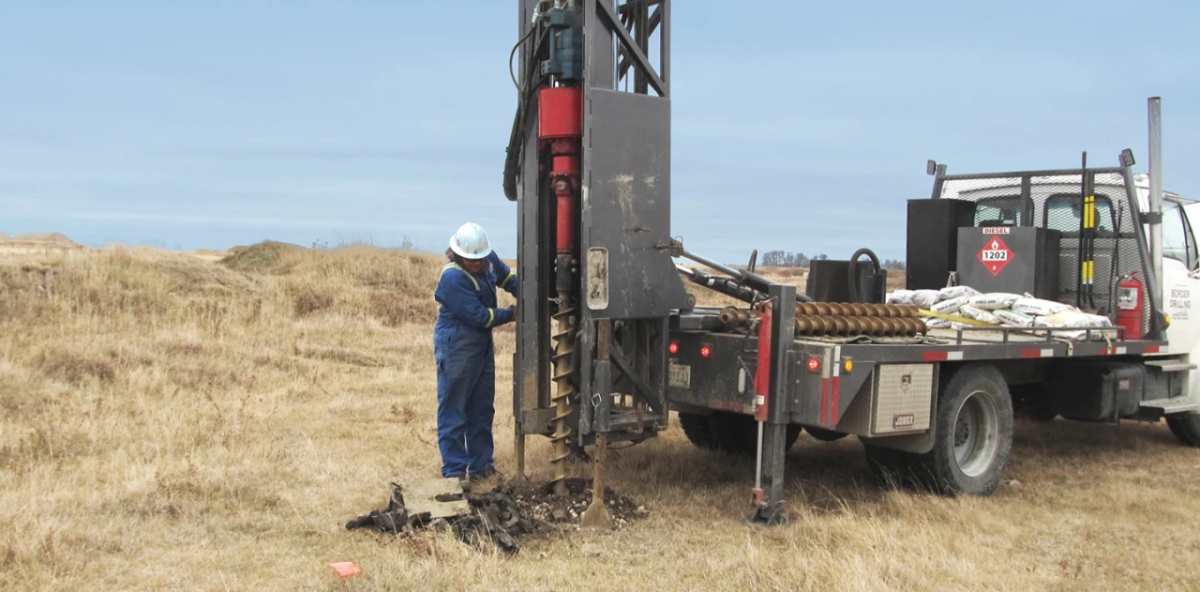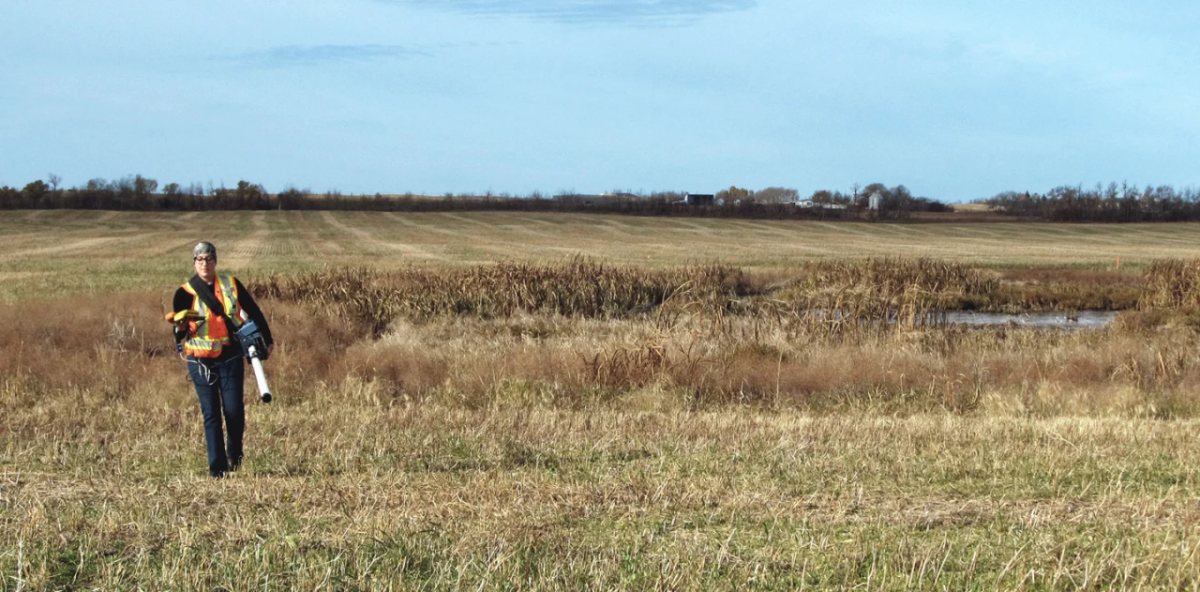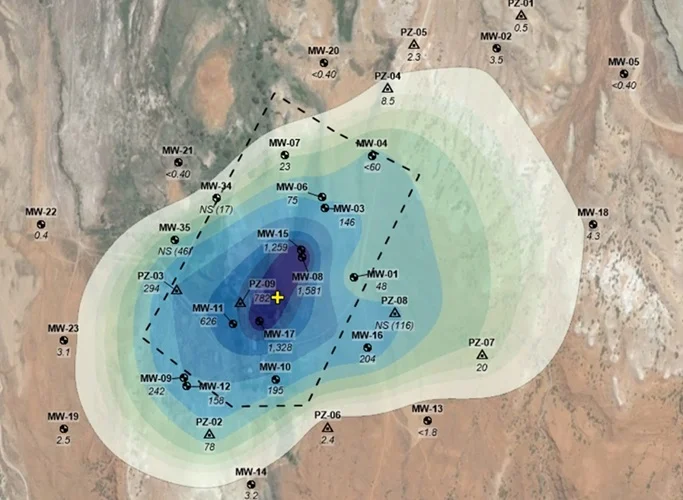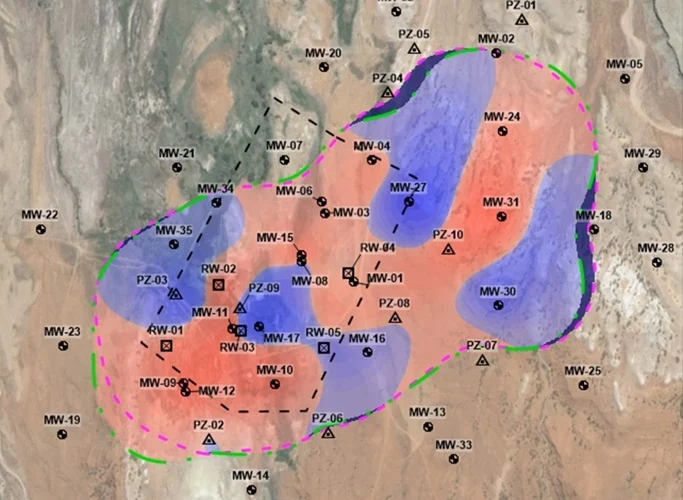WSP USA Tools Set Higher Standards for Identifying Groundwater Contamination
Groundwater Plume Analytics® tools are providing WSP clients with more accurate way to assess hazards; presents data that is more compelling, easier to understand.
For more than 100 years, a succession of industrial companies polluted a groundwater aquifer in central Canada so thoroughly that it became toxic to drink. Today — more than 30 years after new water supplies were tapped for residents and remediation began — the groundwater is still contaminated.
That timeline is not unusual. Even with pumping and treating and natural attenuation, contamination can persist for decades in groundwater resources. What is unusual in this case and many others is the fresh and encouraging insights provided to environmental regulators and the community by WSP’s Groundwater Plume Analytics® tools.
World Water Day will be observed on March 22, and in remarkable alignment with the theme of this year’s event — “Groundwater – Making the Invisible Visible” —Groundwater Plume Analytics® tools are capable of literally achieving this goal.
“The project team had been performing data analyses using traditional industry-accepted approaches, including well-by-well analysis and assessing remedial performance by comparing reductions in contaminant plume areal extent,” said Joe Ricker, senior technical principal at WSP USA, who developed one of the foundational tools at Earth Consulting Group (EarthCon), a company acquired by WSP in February 2021.
Based on the traditional approach, a comparison of plume maps in the annual reports showed that the areal extent of the plume had reduced by about 35 percent over 15 years of pumping and treating, which was not a bad result.
“However, with the application of our tools, we were able to really highlight something much more significant,” Ricker said. “Our analysis showed a similar reduction in areal extent, but we were also able to demonstrate a 98-percent reduction in the plume mass which could not be ascertained by the traditional methods. Emphasizing a 98-percent reduction in contaminant mass instead of a 35 percent reduction in areal extent was a dramatic gamechanger.”
Making the Complicated Simple
This was such good news for the client that the firm’s managers asked Ricker to present the analysis to a community monitoring group. Thanks to the tool’s presentation capabilities, which translate complex data sets into easily understood graphics, the firm’s presentation was so well received that even the toughest critics in the group were impressed.
“They could see and understand the data in a much more compelling way than usual,” Ricker said.
This kind of “ah-hah!” moment is something that Ricker and his colleagues have seen often from industrial clients with groundwater pollution, from clients themselves, environmental regulators and from public stakeholders.
“If we were to just offer the data sets to the public or even many professionals, they would have a very hard time understanding what they mean,” said Tim Goist, senior technical principal for WSP. “Using this tool’s capabilities, we can spend 30 minutes with a layperson, and they will usually grasp a very complicated groundwater analysis.”
The Groundwater Plume Analytics tools don’t use artificial intelligence or complex computer modeling, but relatively simple techniques based on the use of grid files from commonly used contouring and spreadsheet software. The foundational tool was developed by Ricker more than 20 years ago as he sought methodologies that could use data from multiple monitoring wells to measure plume average concentration and mass, in addition to the more commonly measured areal extent.
Game-Changing Tools
Some of WSP’s Groundwater Plume Analytics® tools include:
Ricker Method® Plume Stability Analysis – This is the foundational tool developed by Ricker used to determine whether a dissolved groundwater plume is shrinking, stable or increasing.
Ricker Method® Spatial-Change Indicator™ (U.S. Pat. No. 10,400,583) – This tool allows the viewer to observe relative changes in a groundwater plume over time. The tool is used to identify areas of potential sourcing, evaluate plume migration, evaluate remedial performance, provide evidence of attenuation and many other powerful interpretations of plume behavior.
Remediation System Benefit Analysis, or RSBA® (U.S. Pat. No. 9,299,038) – This tool is used to evaluate the relative impact an active groundwater remediation system (such as pump and treat) is having on the stability of a dissolved plume, and considers operation and maintenance costs in the context of efficiency and inefficiency. In practice, RSBA® can demonstrate if the plume is shrinking because of – or despite – the remediation system.
Ricker Method® Well Sufficiency Analysis™ (WSA) (U.S. Pat. No. 10,304,223) – This tool is used to determine the appropriate number of wells needed to monitor plume behavior, with a focus on reducing the monitoring well network and related costs.
Ricker Method® Transect Analysis – This tool creates a better way to assess mass flux or rate of contaminant flow across an arbitrary boundary. It can be used to answer the question: How much of that contaminant is leaving one site and going to another?
Ricker began working with Goist at EarthCon after they both joined the environmental consulting firm in 2002. “I was fascinated that Joe was able to reliably evaluate plume stability with data from monitoring wells,” Goist recalled.
The tools boosted EarthCon’s business with industrial clients—and the firm’s reputation for groundwater plume analysis was also burnished by journal articles and increasing acceptance by environmental regulators, some of which require it be used to validate site closure proposals.
Expanding Its Application
After incorporating custom computer coding from David Winchell, WSP senior engineer, Ricker, Goist and Winchell received two additional patents in 2019 for algorithms that Winchell helped develop.
Ricker and Goist had already received a patent for one of the tools in 2016. And since WSP acquired EarthCon, the trio have focused on marketing the Groundwater Plume Analytics® tools externally and within WSP.
“At WSP, we’re meeting with teams all over the world—Canada, the U.S., Brazil, Australia, several European countries—and they’re bringing it to their clients,” Ricker said.
While the tools haven’t yet been applied to groundwater contaminated with polyfluoroalkyl substances (PFAS), Ricker and his colleagues anticipate deploying it soon.
“We think WSP is well positioned to apply the tools to PFAS,” Goist said. “When we receive PFAS data sets and run them through our analytics, we’re going to learn things that are probably unknown currently.”
Accelerating remediation is the ultimate goal. For the Canadian community, Ricker and his team in WSP’s Memphis office will update their analysis routinely and refine their conceptual site model to assess whether the remediation is meeting the environmental regulator’s timeline.
“One of the gratifying parts of using these tools is helping clients and regulators better allocate money spent on remediation,” Goist said. “We have seen many sites with energy-intensive remedial approaches that, while cleaning groundwater, they are doing it using energy-intensive methods to do so.”
“With our tools, we have found that many of these sites can actually clean up quicker under natural conditions,” Ricker added. “I know that sounds counter-intuitive, but the tools demonstrate that reality. This allows stakeholders to then apply those dollars saved to other sites that are experiencing much more robust problems.”
[To subscribe to Insights, contact the editorial staff at insights@wsp.com.]






